Accepted Scientific Name: Rebutia heliosoides (P.Lechner & Draxler)
[Basionym: Sulcorebutia heliosoides P.Lechner & Draxler 2008]

Weingartia heliosoides (Rebutia heliosoides) Photo by: Agócs György
Origin and Habitat: Bolivia (Western South America, Southern America)
Type Locality: Depto. Chuquisaca, septentrionaliter pagi Sopachuy, 2500m
Habitat: Weathered quartz sandstones in mountain ridges.
Synonyms:
Description: It is a nice small species reminding of Rebutia heliosaSN|5204]]SN|5204]]. The plants in habitat are solitary or rarely with few basal offsets, but grafted specimens branches profusely.
Stem: 35 (-40) mm wide gradually merging with a tap-root up to 80 mm long. Epidermis green.
Tubercles: 2 mm wide, 3 mm long, up to 1 mm high.
Areoles: 2 mm long, tapering downward, white.
Spines: up to 25 pectinated, white, yellowish (rarely brown) with dark bases, arranged adjacent to the body and almost completely covering the epidermis.
Flowers: 3-4 cm wide, petals spirally arranged in two or three rows. Outer tepals orange-red, Inner tepals yellow with orange-red tips. Rarely pure yellow. Pistil and stamens pale yellow.
Fruit: Oblong white berries.
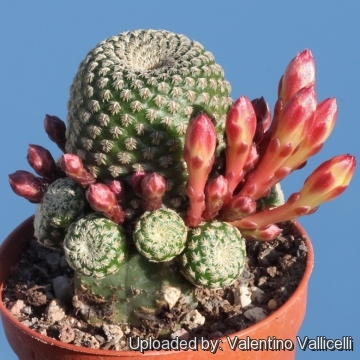 Weingartia heliosoides (Rebutia heliosoides) Photo by: Valentino Vallicelli
Weingartia heliosoides (Rebutia heliosoides) Photo by: Valentino Vallicelli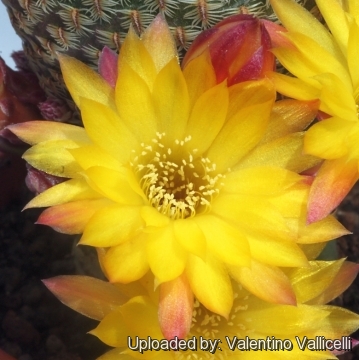 Weingartia heliosoides (Rebutia heliosoides) Photo by: Valentino Vallicelli
Weingartia heliosoides (Rebutia heliosoides) Photo by: Valentino Vallicelli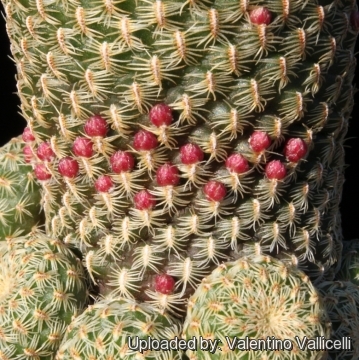 Weingartia heliosoides (Rebutia heliosoides) Photo by: Valentino Vallicelli
Weingartia heliosoides (Rebutia heliosoides) Photo by: Valentino Vallicelli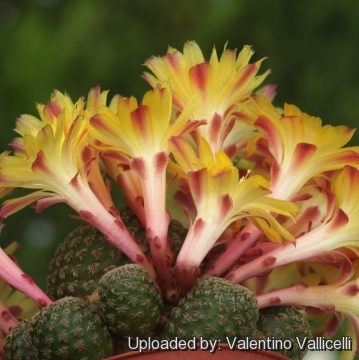 Weingartia heliosoides (Rebutia heliosoides) Photo by: Valentino Vallicelli
Weingartia heliosoides (Rebutia heliosoides) Photo by: Valentino Vallicelli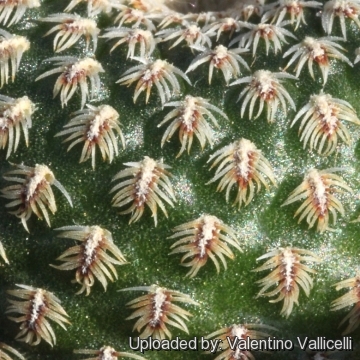 Weingartia heliosoides (Rebutia heliosoides) Photo by: Valentino Vallicelli
Weingartia heliosoides (Rebutia heliosoides) Photo by: Valentino Vallicelli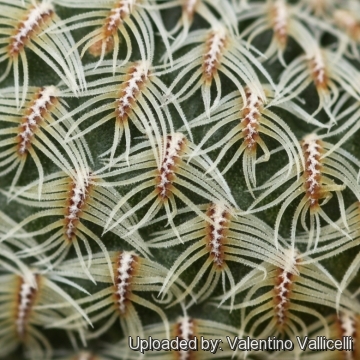 Weingartia heliosoides (Rebutia heliosoides) Photo by: Valentino Vallicelli
Weingartia heliosoides (Rebutia heliosoides) Photo by: Valentino Vallicelli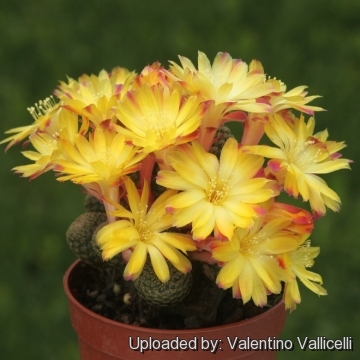 Weingartia heliosoides (Rebutia heliosoides) Photo by: Valentino Vallicelli
Weingartia heliosoides (Rebutia heliosoides) Photo by: Valentino Vallicelli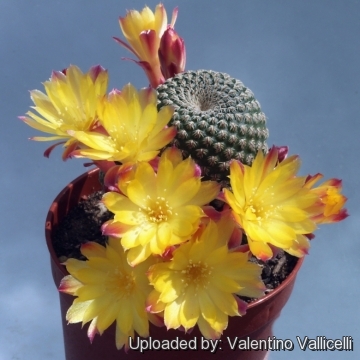 Weingartia heliosoides (Rebutia heliosoides) Photo by: Valentino Vallicelli
Weingartia heliosoides (Rebutia heliosoides) Photo by: Valentino VallicelliCultivation and Propagation: These plants come from mountainous areas, so like bright light, cool and dry conditions in the winter; this is important for the flowers as well as for their health. Without this cool winter period (0-10° C) they normally wont get many buds. They have thick taproot and are of difficult cultivation and rot prone because of a great sensitivity to the excess of watering, not easy to get to any large size on their own roots really a challenge to grow into a large clump. They are commonly grafted to avoid root problems and to make easier to grow. Sun Exposure: Suited for sunny-brightly exposure; can tolerate light shade.
Cultural Practices: Suited for airy exposures. Needs deep pot and good drainage to accommodate its tap root. It is quite cold resistant as low as to -5° C or less for short periods of time. It is a fine plant for a rock garden or container, contrasts well with agaves, yuccas, and low-growing flowering plants.
Pests & diseases: It is especially prone to root rot, therefore, underpot in a smaller container filled with very porous compost.
Propagation: Cutting, seeds or graft. Seeds can be sown in the spring or summer. The seedlings should not be disturbed until they are well rooted after which they can be planted separately in small pots.
Your Photos
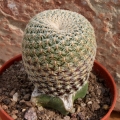
by Valentino Vallicelli
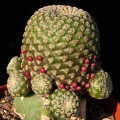
by Valentino Vallicelli
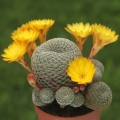
by Valentino Vallicelli





















